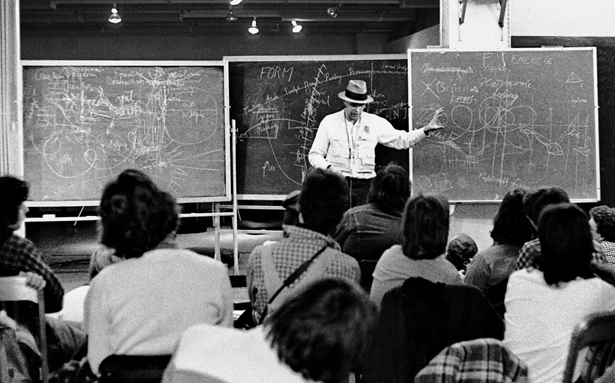14th October – Self-initiated Project Idea
14th October – Self-initiated Project Idea
My self-initiated project idea is to look at assessment methods when teaching large groups of students online. The focus will be to look at a checklist method of assessment and to examine whether it can reduce the attainment gap between students.
Professional Context
During the lockdown period, while teaching on the BA Interior Design course at CCA, I was tasked with developing a method, using teams, to informally assess large amounts of work, in a way that could be done very frequently as a form of ‘checking in’. Though it was just informal feedback the grades of my student’s work had the largest jump from initial feedback to final assessment. As a result I’ve been tasked to conduct a series of workshops for other members of staff and to implement the assessment method across the course. This piece of research could effectively be a ‘live project’ and help me prepare for staff workshops as well as tracking student attainment throughout the year.
Problem and Question
How do we assess student’s work when faced with large cohorts?
Can the checklist method of assessment be used in summative contexts?
Should we have more frequent and informal methods of assessment that can be done on a more regular basis?
Does the checklist method allow for more time teaching and less time marking?
Does the checklist method help to eradicate individual teacher bias and the attainment gap?
Is looking at general trends in the study body better than addressing individual needs?
More questions and the positives of this method can be found in the slides below.
Action
The first action of this project will be to develop a series of workshops to describe the assessment method to other staff members. The second action will be to implement the marking system on all courses across BA Interior Design and examine how it impacts student performance.
Research
This is the heading I had most trouble with. I hope to conduct statistical analysis, that looks at general trends among students rather than individuals. However, seeing Stine Hedegaard’s presentation really helped me start think about how the project could be structured into a beginning, middle and end — something I’ve not thought about before now.
Next Steps
- Think about how the checklist could be generated. With students or staff? My initial checklist was developed fluidly during group tutorials but perhaps this could happen more formally.
- I need to develop my research structure and strategy. Would is my sample size? What is my approach (inductive, qualitative, structured , etc., etc.)?
- What are the key steps in my research? There should be three stages: implementation, assessment of performance and reflection.
- Think about/research how this method would impact interaction between students.
- Research whether the marking method acts as a good mediator between person and institution. Does this help alleviating the attainment gap?





Feedback Received
I was offered some great feedback from other members of the group. Many of the questions will be used in my next steps.
How is the list generated? With students? With staff?
Mediation between person and institution? Does this make people do worse?
Does it allow students to interact? They have more common ground to interact with.
Trends rather than individual problem. Could this help eradicate bias?
Feedback for other people in the group:
Stine Hedegaard
I found this presentation to be a really useful guide in structuring my own project. I have included the screenshot above as a reminder.
Good to acknowledge when researching that we are part of the problem!
Have a structure with a beginning middle and end. Great example of this in the screenshot above.
There is quite a lot in the research question
Good example to learn from
Not allowed to conduct research on students unless it’s more then ten and needs to anonymous
Should it be voluntary?
Rachel Davey
Reflecting on past teaching experiences
Accessibility and sharing knowledge
Students like to share between themselves rather than listening to teachers
Making a printing studio as a community project
Find something and experiment with it. How could this be a larger project?
Too large for action research project?
Affan Hameed
How do you gather student feedback?
How to shift student thinking from traditional modes of thought
Ruth Lang
How we teach in an online community?
The concept of failure?
How do we fail better?
Does their fear of failure make us fail?
Creative attributes frameworks – resilience instead of failure
Is failure includes in the marking criteria ?
Is fear of failure a class issue?
Ruth should talk to Rachel!
Lainy Malkani
Arboreal teaching
Going to really interesting places in nature to learn
Sound and nature and podcast, as a way to create a research project.
What’s the hypothesis?
Evaluative forms of the experience for students to fill in.
Is success a grade or the process of learning? How the students may approach it. This could link to Ruth’s ideas about the perception of failure among students.
Other ways of helping students articulate what they are interested in.
Think more clearly about the research question.
Guidance from John
Don’t let the project get too large. The idea is to pick an area which you would like to investigate that will be of benefit to your student’s learning, you will then learn from this.
Action research is a good method.
Remember to reflect on all the important points of your research.
There is an opportunity for tutorials later in the year.
